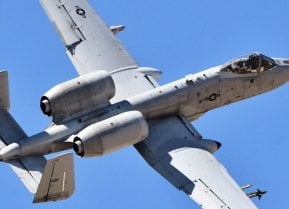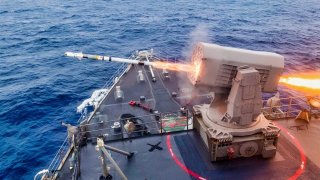The Messy Battlespace That Would Be a U.S. vs. China War
Warfare in the Pacific between the U.S. and China promises to be an all-service, all-domain, and allied endeavor. Waging it will demand the utmost not just from naval forces but from fellow services that operate from dry earth.
Human psychology makes for a messy battlespace, but such is the reality of strategic competition short of war. Battles produce objective results; outcomes of armed encounters short of war are subjective. The eye of the beholder rules. Whoever most observers believe would have won a wartime engagement tends to “win” a peacetime engagement. Accordingly, a contender’s influence over these observers waxes or wanes along with the judgments they reach about power and weakness.
But there’s more. Luttwak zooms in on some perverse aspects of shaping efforts. Influential audiences, he opines, may be inexpert in military matters, so they may render a faulty verdict on relative military prowess. They may even judge capability or competence on something as trivial as the look of an armed force. A force that looks fearsome to the untutored might prevail in a peacetime struggle for perceptions over a stronger force with less visual cachet. In that sense peacetime competition resembles a beauty contest.
Yet lay observers’ judgments count all the same, right or wrong.
Bottom line, the victor in peacetime competition need not be the side most likely to prevail in an actual trial of arms. Luttwak notes that Soviet shipwrights tended to heap antennae and weaponry on warships’ upper works, in ready view of observers. American ships, by contrast, increasingly housed their missiles in vertical launchers, in essence silos embedded in their main decks. Their main armament remained invisible. Even though vertical launch marked a leap in reliable combat power over unwieldy deck-mounted missile launchers, it detracted from a cruiser’s or destroyer’s image as a seaborne juggernaut. Similarly, the U.S. Navy’s turn to phased-array radars meant that radars now looked like flat panels on a ship’s superstructure. They were unimposing compared to rotating arrays. Again, bleeding-edge technology can diminish visual impact.
What is formidable may fire few imaginations—and that has political consequences. Few naval experts would have rated a Soviet Navy ship superior to its U.S. Navy counterpart during the late Cold War, but Soviet behemoths looked so darned cool that inexpert audiences could conclude they were better fitted for sea battle. The U.S. Navy could lose out in peacetime strategic competition despite overshadowing its adversary by most metrics that mattered in battle.
The same could hold true in the competition with China and its confederates today.
Military people and the weapons they carry are capability made manifest. They are implements of deterrence, coercion, and reassurance. Their professionalism, skill, and elan contribute directly to victory in the war for perceptions. Soldiers, marines, sailors, and airmen should think of themselves in these terms, and dream up new and enterprising ways to work together. If they do, they—and the society they serve—may prosper in strife-torn times such as our own.
And denizens of the wretched hive of scum and villainy will weep salty tears.
About the Author: Dr. James Holmes from the U.S. Naval War College
James Holmes is J. C. Wylie Chair of Maritime Strategy at the Naval War College and a Distinguished Fellow at the Brute Krulak Center for Innovation & Future Warfare, Marine Corps University. This is a narrative version of a talk given at the Rhode Island National Guard Headquarters over the weekend. The views voiced here are his alone.


